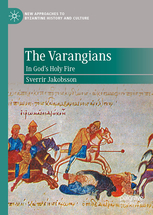Our very own Neil Price, archaeologist and Viking expert, went through some of the biggest Viking films of all time. As was to be expected, he found much inaccuracy in the details but nevertheless felt that most of them captured something of the feel of Vikings, which is no small praise coming from someone who is one of the world’s leading authorities on the Viking mind (and author of a book of the same name).
For our purposes, perhaps most interesting is The 13th Warrior from 1999, starring Antonio Banders as Ibn Fadlan, the famous Arabic chronicler of the Vikings. The film is admittedly very loosely based on his accounts, and Neil does point out some of the flaws. Nevertheless, he says that it captures some of the cultural exchange that did take place along the Volga 1100 years ago, with various cultures conversing through interpreters. The Arabs, being the main protagonists, here speak English as cinema Vikings are wont to do. In this case, however, the Norwegians speak modern Norwegian. Shouldn’t they have gone for Icelandic instead?
Neil even has a kind word to say for the Marvel Universe Thor films, pointing out that it’s fascinating that people are still interested in stories first told around 1500 years ago, however much has changed in the retelling.
But the best and the worst is reserved for one of the first big-budget Viking films in Technicolour, the aptly titled The Vikings from 1958. While he says that the Vikings are dressed unhistorically as cavemen, he is impressed that the hero is shown jumping between oars to show is prowess, a feat attributed in the Sagas to Olaf I. of Norway and here shown for the only time in cinema.
The story is not about the famous Olaf, however, enthusiasts of whom should be directed to the Icelandic film White Viking from 1991. The Vikings recounts the story of Ragnar Lothbrok and his sons, lately seen in the TV series of the same name. The aging Ragnar is played by Ernst Borgnine but the leading role goes to one of his sons, played by Kirk Douglas. Kirk himself is a Rus of sorts, being born Issur Danielovitch to Belarusian parents in New York. Everything always leads back to the Rus.
For the 13 minute video, click here:
Viking Expert Breaks Down Famous Viking Movies & TV Shows – YouTube



